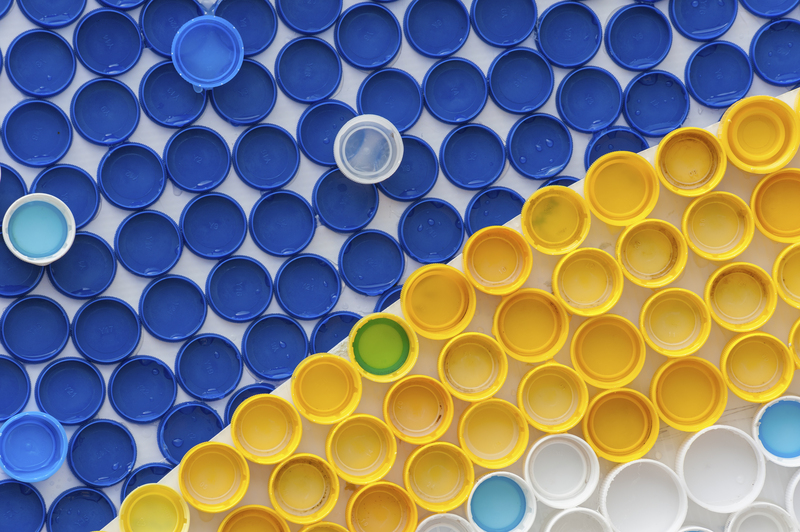Achieve Better Recycling Habits at Home with These Tips
Improving your household recycling practices can have a significant impact on the health of our planet. With landfills overflowing and natural resources dwindling, adopting better recycling habits at home is essential. This comprehensive guide explores actionable strategies, creative solutions, and expert tips to help you recycle more efficiently, reduce your waste footprint, and promote sustainability from your own kitchen or living room.
Why Effective Recycling at Home Matters
Many people underestimate the importance of responsible recycling in their daily routines. By making simple changes at home, you can help conserve resources, lower greenhouse gas emissions, reduce pollution, and create a more sustainable world for future generations. Recycling at home not only benefits the environment but can also lead to cleaner living spaces and a greater sense of community responsibility.
Environmental Impact of Household Recycling
- Saves Energy: Recycling helps avoid the energy-intensive process of creating products from raw materials.
- Reduces Landfill Waste: Properly sorting and recycling items keeps trash out of overflowing landfills.
- Conserves Resources: Many household items are made from materials that can be reused or repurposed.
- Decreases Pollution: Less waste in landfills means fewer greenhouse gases and less contamination of soil and water sources.

Understanding the Basics of Home Recycling
Before you can achieve better recycling habits at home, it's important to understand what can and cannot be recycled. Each municipality may have its own guidelines, but there are general rules that you can follow to get started.
Key Materials Typically Accepted in Curbside Recycling
- Paper and Cardboard: Newspapers, magazines, office paper, cardboard boxes, and paper packaging.
- Metal: Aluminum cans (soda, beer), tin/steel food cans, and clean foil.
- Glass: Bottles and jars, usually clear, green, and brown glass.
- Plastic: Containers labeled with recycling codes 1 (PETE) and 2 (HDPE), such as milk jugs, water bottles, and detergent containers.
Check with your local recycling program for an up-to-date list of what is accepted and make sure to follow their specific instructions.
Achieve Better Recycling Habits at Home with These Tips
Tip #1: Create a Dedicated Recycling Station
Set up a clearly labeled area in your kitchen, garage, or another convenient location. Use separate bins for different recyclables, such as plastic, paper, glass, and metals. This will make sorting easy for everyone in the household and minimize the temptation to toss recyclables in the trash.
- Arrange bins vertically if space is limited.
- Use color-coded containers or distinct labels for each material.
- Include guidelines for what goes in each bin to eliminate confusion.
Tip #2: Learn What's Recyclable and What's Not
Many people are surprised to learn that certain items can't be recycled curbside. Check your municipal guidelines before you recycle:
- Not recyclable: Plastic bags, styrofoam, greasy pizza boxes, electronics, or certain multi-layered packaging.
- Rinse out food containers to prevent contamination.
- Flatten cardboard boxes to save space in bins.
When in doubt, leave it out! Incorrect recycling can contaminate batches and cause more harm than good.
Tip #3: Make Recycling a Family Affair
Developing good recycling habits at home is easier when the whole family is involved.
- Assign recycling duties to children or roommates each week.
- Host recycling games or challenges to encourage participation and learning.
- Educate family members about what happens to recycled materials and why it matters.
Transforming recycling into a shared responsibility increases its visibility and importance.
Tip #4: Reduce and Reuse Before You Recycle
Better recycling at home goes hand in hand with reducing and reusing. Consider alternatives before throwing anything away.
- Opt for reusable bags and containers instead of single-use plastics.
- Buy in bulk to minimize packaging waste.
- Repurpose glass jars as storage containers or craft supplies.
- Donate unwanted clothes or electronics instead of discarding them.
Remember, the best waste is the one that never gets created!
Tip #5: Know How to Handle Hazardous Waste
Some household products require special disposal methods. Don't place hazardous materials in curbside recycling bins:
- Paints, solvents, and motor oil
- Electronic waste (e-waste) like old phones and batteries
- Chemical cleaners and pesticides
- Fluorescent bulbs and certain batteries
Check with local programs for special drop-off events or permanent collection sites for these materials.
Tip #6: Minimize Wish-Cycling
Wish-cycling is when people put questionable items in the recycling bin, hoping they'll be recycled. Unfortunately, this can disrupt the recycling process.
- If you aren't sure an item is recyclable, research it using your local government's website or call the recycling hotline.
- Keep up-to-date lists posted near your bins to remind everyone what belongs and what doesn't.
Tip #7: Compost Organic Waste
Composting is an excellent way to reduce landfill waste and create nutrient-rich soil for gardening:
- Fruit and vegetable peels
- Coffee grounds and filters
- Eggshells
- Yard trimmings and leaves
Place a compost bin in your yard or use a kitchen composter if you lack outdoor space.
Tip #8: Involve Your Community
Spread your good home recycling habits throughout your neighborhood:
- Encourage neighbors to set up similar recycling stations in their homes.
- Share tips and resources via social media or local groups.
- Organize community clean-up or recycling events.
Together, small changes add up to a much bigger impact.
Common Recycling Mistakes to Avoid
- Throwing recyclables in plastic bags: Most programs reject bagged items.
- Failing to rinse food containers: Food residue can spoil entire batches.
- Recycling non-recyclable plastics: Only certain plastics are accepted curbside.
- Putting hazardous waste in the bin: These require special handling.
- Ignoring local guidelines: Recycling rules vary from city to city.
How to Stay Motivated and Consistent
Adopting and maintaining better household recycling habits can seem challenging at first. Here's how to keep the momentum going:
- Celebrate milestones, such as reducing your garbage output by a certain percentage.
- Track your progress using charts or digital logs.
- Set family or personal goals for your recycling efforts each month.
- Share your positive results with friends and inspire others.

Resources for Improving Your Home Recycling
To achieve the best recycling habits at home, empower yourself with the right information. Here are some helpful resources:
- Your city or municipal website for local recycling rules and drop-off locations
- Earth911 for materials recycling guides and locator tools
- The EPA's recycling resources for national guidelines and educational materials
- Reusable goods directories for donating or selling unwanted items
Conclusion: Make Home Recycling a Priority
Achieving better recycling habits at home is one of the most impactful choices you can make for the environment. By setting up effective systems, educating yourself and those around you, and staying consistent, you can dramatically reduce your household waste and inspire others to do the same. Start slow, celebrate each step forward, and remember: every bottle, can, or cardboard box you recycle is one less in a landfill. Together, we can make a greener, cleaner future--one home at a time.